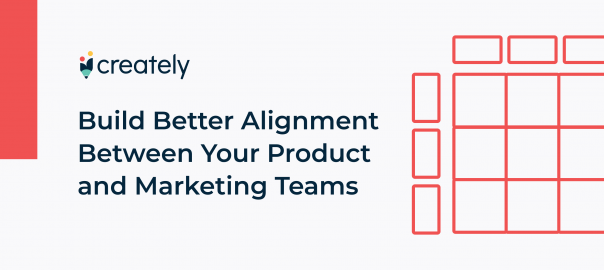The PDCA cycle is a great tool to help keep your team in line; to help organize their thoughts and actions. Too often many teams tend to go off their course when they are in the early stages of teamwork and know little or nothing about quality improvement. This is where the PDCA Cycle can help.
The PDCA cycle seems fairly easy to understand, but there are many layers to it. In this post, we will cover each step of the plan do check act cycle and provide you with tools that you can use to accelerate the cycle.
Let’s find out how you can use this powerful technique to improve your team problem-solving sessions.
What is PDCA?
The best way to describe the cycle is through a graphic. The cycle flows clockwise through four steps; Plan, Do, Check and Act. And it describes the process a team would follow as they study a process and devise a plan, run a test, check the outcome, and implement it on a full scale.
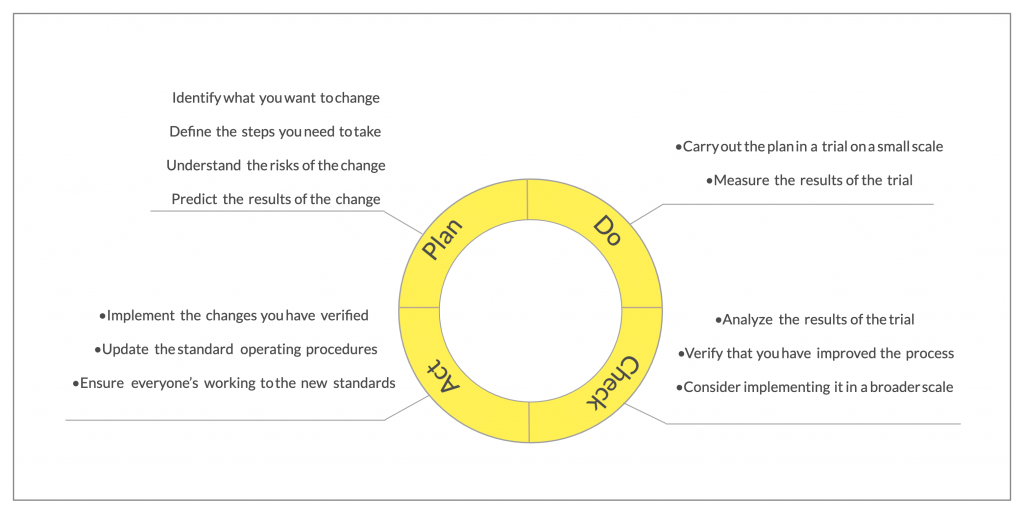
The Plan-Do-Check-Act Cycle is an iterative four-step management method. It can be used by teams to tackle problems and find solutions to them, and to improve business processes. Many organizations use the PDCA model to organize their quality improvement efforts.
One thing you need to remember when using the PDCA cycle is that it is a continuous process as opposed to an end-to-end process, therefore it never ends; the steps need to be repeated again and again for continuous improvement.
Once you have come to the last stage of Act, you need to go right back to the beginning and start all over again. Constantly look for problems, improve the system of production and service, and quality and productivity in order to continuously reduce costs.
An essential part of the lean manufacturing philosophy, it is popularly used as a framework for continuous improvement in management and manufacturing.
The PDCA cycle was originally developed in 1930 by quality expert Walter Shewart – hence also known as the Shewart Cycle. It was later applied to management by Dr. W. Edwards Deming and came to be known as the Deming Cycle.
Benefits of Using the PDCA Cycle
- A problem-solving method that provides a quick way to find an effective solution
- Ensure steady ongoing improvement
- Can be implemented in companies of all sizes and is easy to adapt and implement
- Create an opportunity to constantly monitor the effectiveness of an implemented project
- Detect any risks or problems on time before they lead to any financial losses
- Increase awareness of the employees about the process and the role they play in it.
However, it also involves some disadvantages. The PDCA process requires the involvement of all the individual responsible, which would prove to be quite difficult if they are also involved in other projects. Moreover, it involves multiple steps that range from analysis to testing, therefore it isn’t a great tool for solving urgent problems.
When to use the Plan Do Check Act model
- To carry out a new improvement or change project
- When designing a new product, service, or process
- When planning, implementing and checking compliance
- To track and solve problems
- To implement continuous improvement
- Evaluating a business process related to a specific problem that is being solved
In most organizations, the model is commonly used to implement changes in and improve processes.
How to Use the PDCA Cycle
The PDCA cycle has four stages. We have listed them below along with the steps involved.
Plan – Identify and Analyze the Problem
This step concludes with an actionable plan that can be tested. To do so, you need to first identify the problem along with the process that needs to be improved.
- Select, define and describe the process; start, end, the sequence of steps in between, what it does, the people involved, equipment material and resources that are used, and environmental conditions.
- Identify the key players; internal and external customers, suppliers, process owners, and operators
- Understand customer expectations; identify the specific needs of both external and internal customers. What do they want, when, where, in which quantities, etc.
- Research; look at the historical data available on the process to understand its performance and identify further data you will need to understand the process properly
- Specify the problem associated with the process; for example, it could be caused by failing to meet customer expectations, longer cycle time, lack of resources, etc.
- Identify the root cause; brainstorm around the problem to find its primary causes
- Find a solution: Develop solutions that can be applied to improve the process. Prioritize solutions based on their effectiveness.
- Develop the action plan: Identify the steps you need to carry out to implement the plan, the resources you need, the people who are responsible as well as set a timeframe
Here are some tools you can use in this step,
- Flowchart/ process maps; flowcharts can be used to visualize the process and provide a quick overview of the flow of steps from start to end. Add swimlanes, and you can also highlight different departments or owners involved.
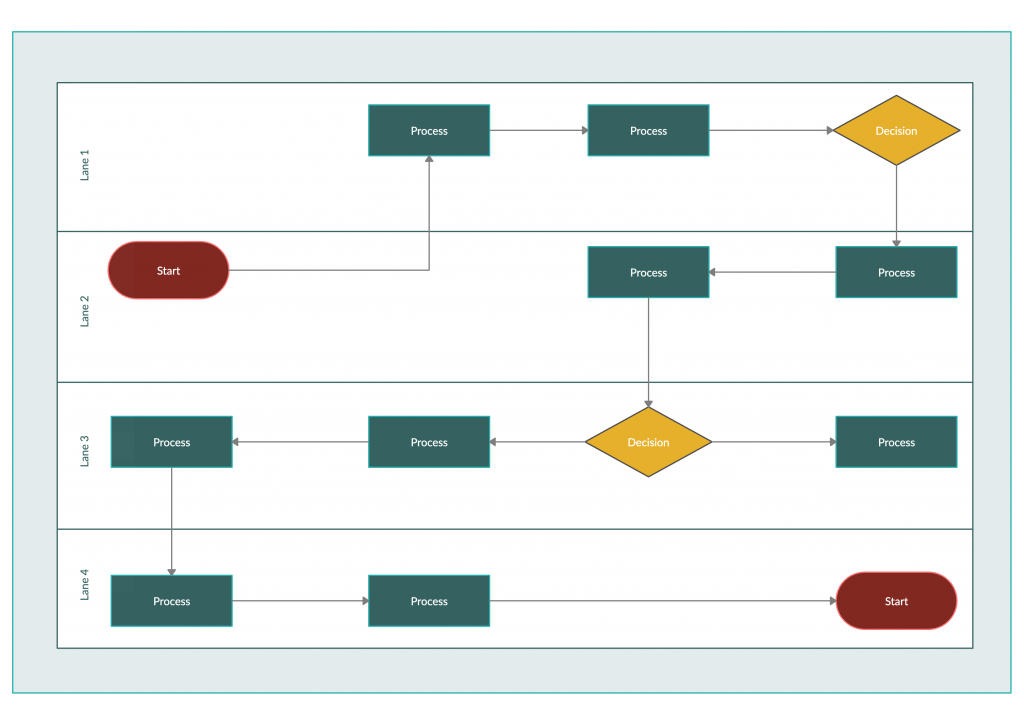
- Affinity diagram; this tool helps categorize all the data you gather from research, surveys, feedback, conversations, etc. By doing so you will be able to understand any themes in the data that might be useful when finding a solution.
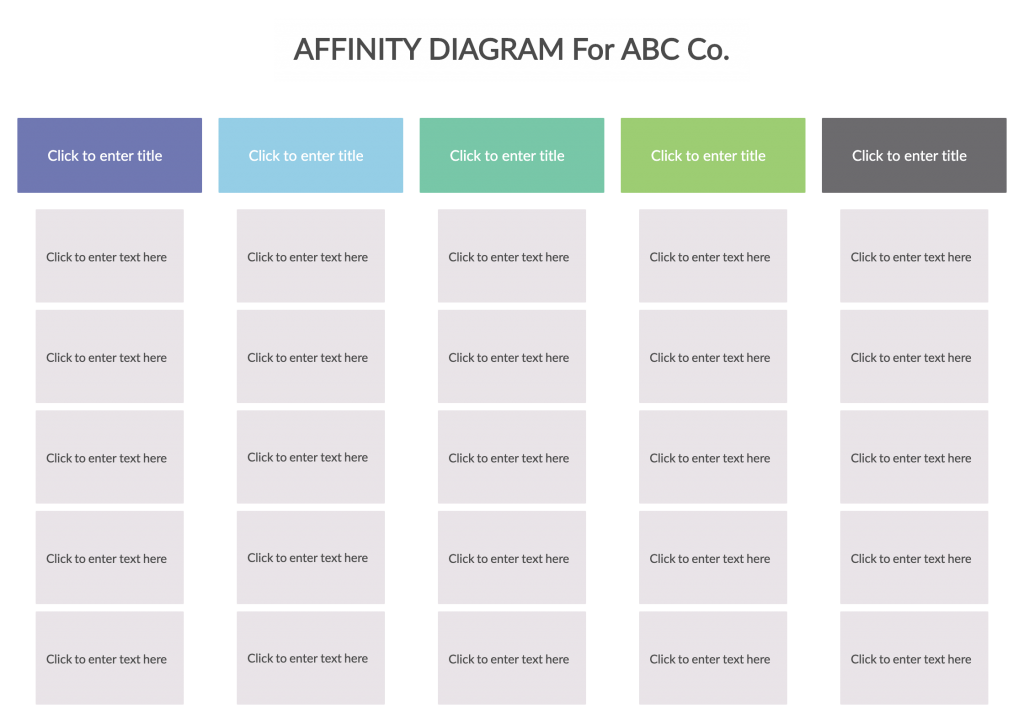
- Cause and effect diagram; this tool comes in handy when you and your team have to brainstorm around the problem to identify its primary causes.
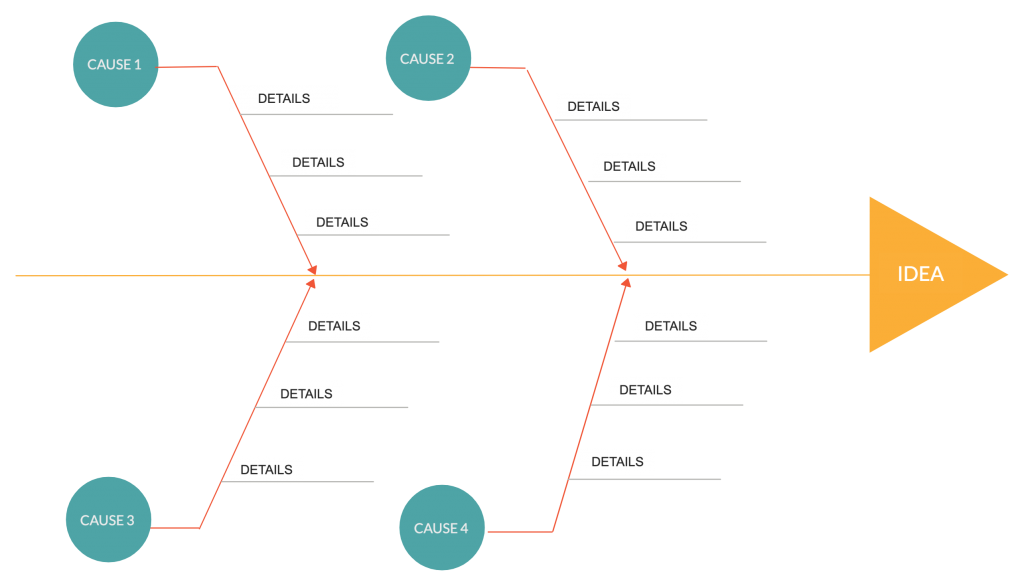
- Impact effort matrix; when prioritizing solutions, you can use the impact effort matrix to prioritize solutions based on the effect they have and the effort it would take.
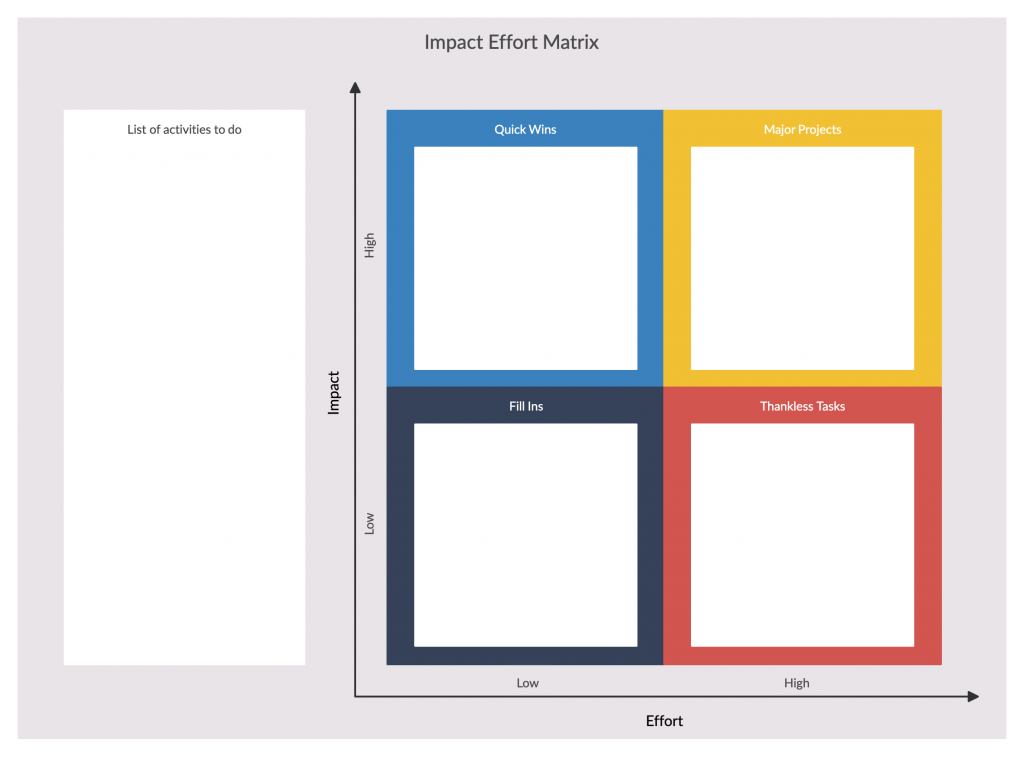
- Action Plan: use this to quickly identify and communicate the key tasks, needed personnel, resources and the timeframe for the plan to the rest of the team
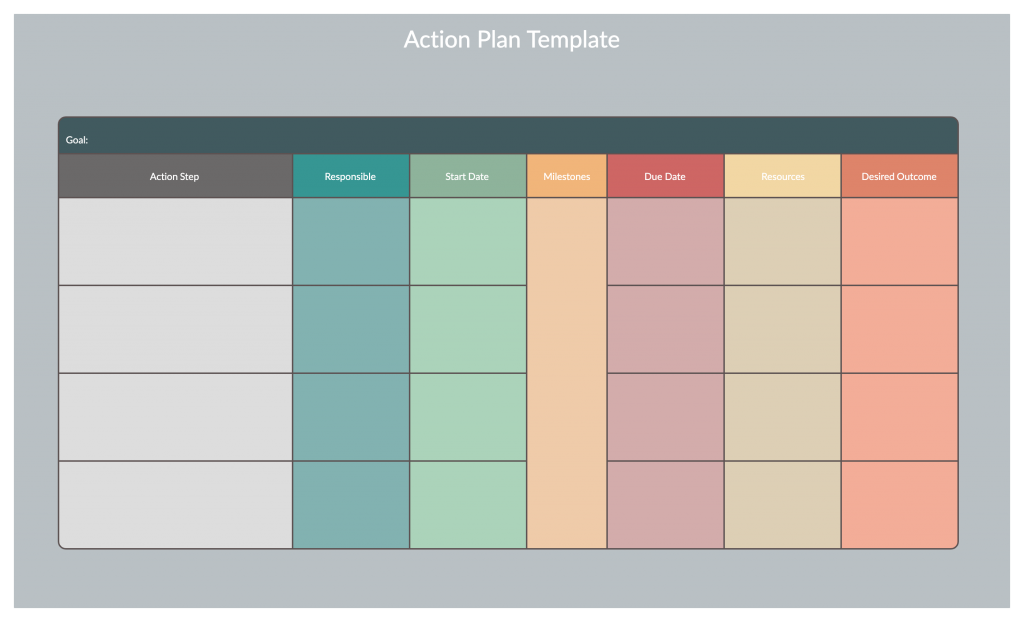
Do – Develop Solutions and Implement Plan
The plan devised in the first step is put to test in this stage.
The trial should be run on a small scale with the customers, in a laboratory or in a production setting. By implementing a small pilot project to observe the results first helps identify mistakes without having to bear huge a cost of an entirely failed project.
It’s equally important to have specified measures you can use to understand how effective is the solution you selected in eliminating the identified problem.
Check – Evaluate the Results
The team checks the results of the test plan in motion. Has the performance of the process improved? Has the group of customers noticed the change?
As you collect data from the test plan, identify what has worked and what has not gone according to plan.
Analyze the data and measure the results to determine if the selected solution can be implemented on a large scale. If the solution hasn’t been as effective as you thought, you will have to devise a plan for another solution and repeat the Do and Check steps again.
Act – Use Feedback to Improve and Replan
In this step, the full implementation of the plan is accomplished. Apply the improvements you discovered during the test to the plan before implementing it.
- Educate the rest of the organization about the improved plan and its importance
- Provide the necessary training to the employees in order to help them modify their job roles
- Standardize procedures to ensure that everyone uses the same format when conducting a procedure
- Put in place a process to monitor and control the implementation of the modified process
Here you can re-do your current state flowchart from step one to show the new and improved process.
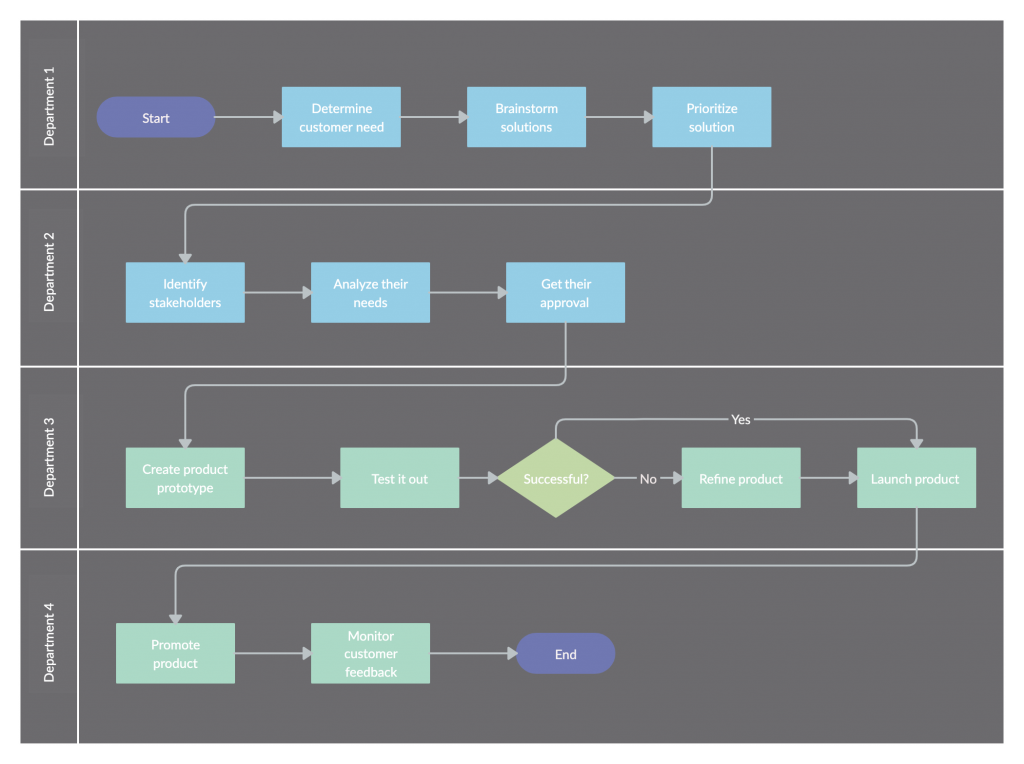
Ready to Plan, Do, Check, Act?
The Deming Cycle or the PDCA cycle is a great tool for guiding the improvement activities of an organization. The steps illustrated above are fairly easy to follow, and you’ll generate effective results if you stick to the them.
Got anything to share with us, let us know in the comments section below.




